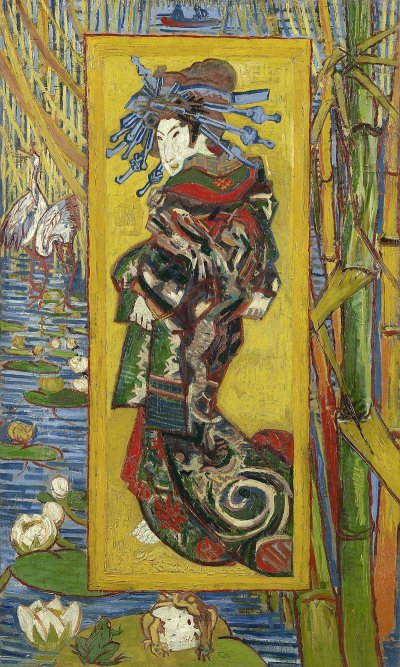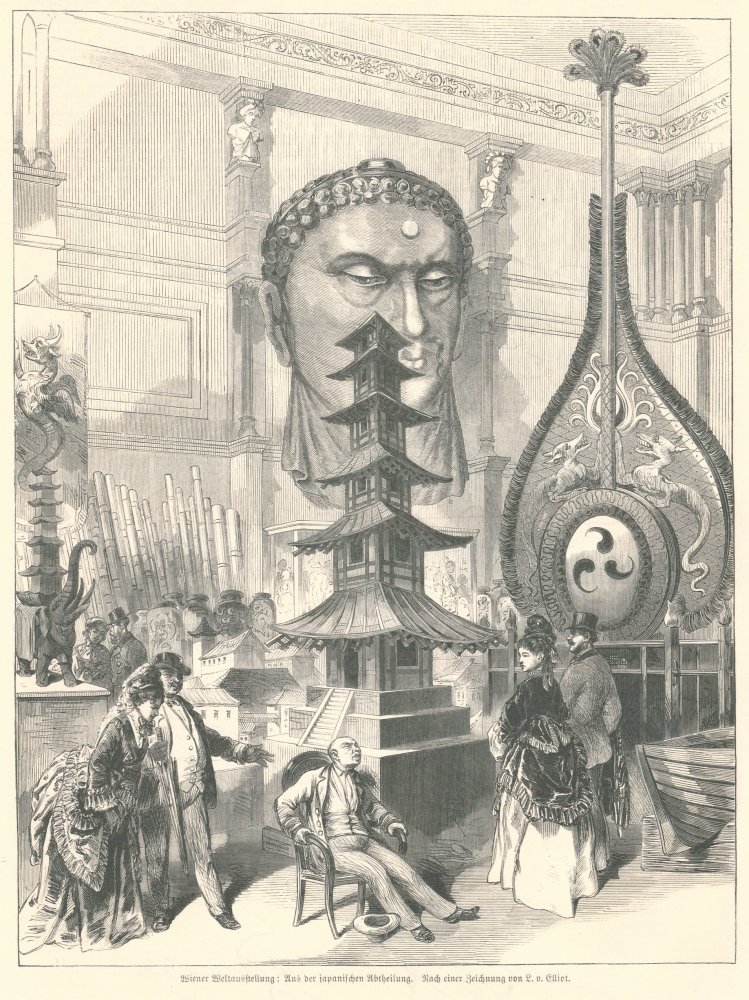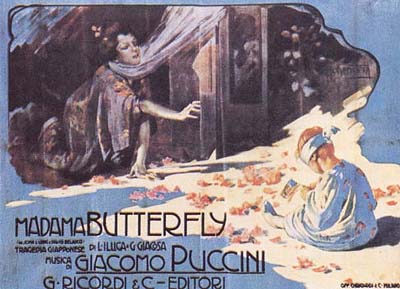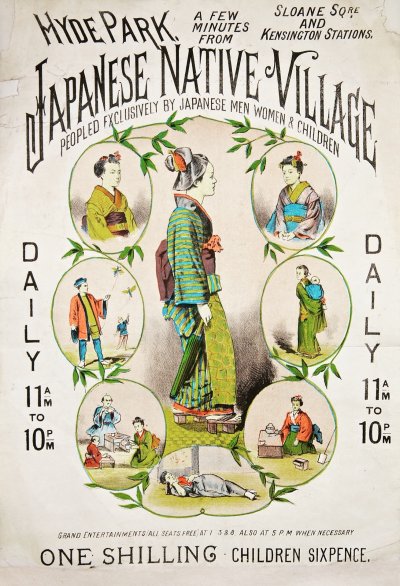 |
||
| |
|
As a result of the opening up of Japan to trade
in the 1850s, a craze for all things Japanese emerged, fed by
the perception of Japan as a mediaeval culture as a popular 19th
century infantile notion of Japan in the "West".
Visual Arts:
This craze resonated particularly with devotees of the 'Aesthetic movement' in the anglophone world and 'Art Nouveau' and it's follow ups of the late nineteenth and early twentieth centuries, and resulted through an infantile reception of various subjects through visual arts. It resulted in popular exhibitions, and all kinds of publications, and pieces of art of many well-known and recognized artists of their time.
Performing Arts:
The first opera with Japanese subjects is probably "The MIkado" (1885) by Gilbert and Sullivan. The Japonism craze was perpetuated by the pompuous, bombastic and overblown Opera "Madame Butterfly" (1904) by Puccini. Even in the 21. century an astonishingly often played work.
Religious Appearances:
From the 12th century, Chan Buddhism came to Japan from China and was received there as Zen. Within the framework of Japonism, these ideas reached the "West". Even in the 21st century, the esoteric appreciation of Zen Buddhism is a late reminiscence of Japonism from the turn of the century before last, and it is hard to imagine the current esoteric business without it.
Horticultural Appearances:
Japanese gardens are supposed to be an expression of Japanese philosophy and history, often found at Buddhist temples or Shint身 shrines, and at historical landmarks such as old castles. Awareness of the Japanese garden style reached the West towards the end of the 19th century and was enthusiastically received as part of the fashion of Japonisme, and as Western garden tastes had by then turned away from rigid geometry towards a more naturalistic style, the Japanese style being an attractive one variant was. A special form belong to Zen gardens. Rock gardens are currently in disrepute as they are not considered natural and counteracts the fashionable view that gardens have to be sustainable. Numerous Japanese Gardens are to be found on all continents except Antarctica.
Sports:
Bujutsu, and the Budo sports (Jiu Jitsu, Judo, Karate, Suijutsu, Aikid身, Sh身rinji Kemp身, Sum身, Kend身, Bujinkan, Iaid身, Ky迂d身) that emerged from it through enrichment with philosophical elements, were originally imported from China to Japan in the 16th century. The first judo school in Germany was founded in Berlin in 1905. From 1910 Jiu Jitsu techniques were taught in the Berlin police.
A Budo master practices in this sense even when he is not in the training hall. Two philosophical principles are fundamental: helping and understanding each other for mutual progress and well-being and the best possible use of body and mind. The aim is to carry these principles as an attitude and to consciously express them in every movement on the tatami mat.
 |
 |
| Vincent
van Gogh, La courtisane (after Keisai Eisen), 1887 |
"Wiener
Weltausstellung: Aus der Abteilung Japan" World Exposition, Vienna 1873 (Japanese Department) |
 |
 |
| Opera
Madam Butterfly, Pucchini 1905 |
The Japanese
Native Village Exhibition, 1887 |
Copyright 2008 ff: Hans P. Boehme